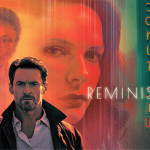“Titanic 1997”
- movieslovers
- November 14, 2024
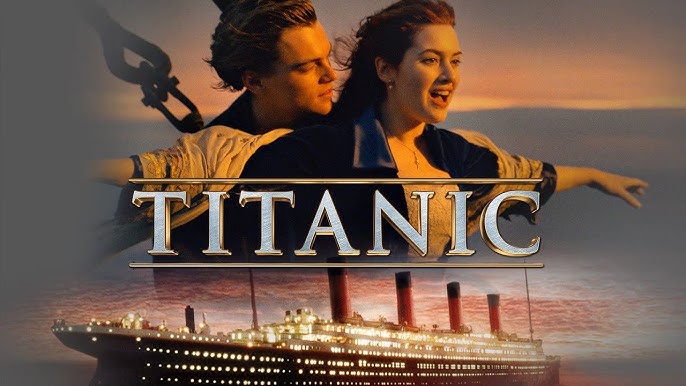
“Titanic” (1997) is an epic romance and disaster film directed, written, co-produced, and co-edited by James Cameron. One of the most famous films of all time, Titanic was a groundbreaking cinematic achievement, blending historical events with a sweeping love story. The film became the highest-grossing film of its time and won numerous awards, including 11 Academy Awards. It remains a beloved classic due to its emotional depth, stunning visuals, and unforgettable performances.
Plot Summary
Titanic is set against the backdrop of the ill-fated maiden voyage of the RMS Titanic, the largest and most luxurious passenger liner in the world, which sank after striking an iceberg on April 15, 1912. The film is framed through a contemporary storyline, where a treasure hunter, Brock Lovett (Bill Paxton), searches the wreckage of the Titanic for a priceless diamond known as “The Heart of the Ocean.” During this expedition, he meets Rose Dawson Calvert (Gloria Stuart), an elderly woman who claims to be a survivor of the Titanic disaster. Rose agrees to tell her story to Brock and his team.
The film then shifts to flashbacks, recounting Rose’s journey as a 17-year-old girl (Kate Winslet) aboard the Titanic in 1912. Rose is an upper-class young woman traveling with her wealthy fiancé, Cal Hockley (Billy Zane), and her controlling mother, Ruth (Frances Fisher). Despite her privileged life, Rose feels trapped in an oppressive relationship with Cal and is contemplating suicide when she meets Jack Dawson (Leonardo DiCaprio), a poor artist who won a third-class ticket to the Titanic in a poker game.
Jack and Rose form a deep and passionate love affair that defies their social classes and the expectations placed upon them. As the romance between them blossoms, the Titanic tragically hits an iceberg, setting in motion the ship’s doomed journey. As the ship sinks, Rose must make life-or-death decisions that ultimately lead to a heroic sacrifice, while Jack helps her find a way to survive the disaster. The movie concludes with an older Rose reminiscing about Jack’s sacrifice, and the legacy of their love.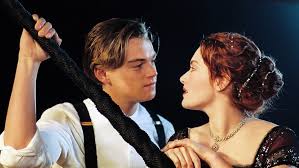
Key Themes
- Love and Sacrifice: The central theme of Titanic is the passionate, transformative love story between Rose and Jack. Their love defies societal expectations and transcends class boundaries, demonstrating the power of genuine human connection. The film emphasizes the theme of sacrifice, with Jack’s ultimate act of giving his life to save Rose highlighting the depth of his devotion to her.
- Class and Social Expectations: The stark contrast between Rose’s high-society life and Jack’s humble background serves as a commentary on the rigid class system of the time. The couple’s relationship challenges the class structures, with their love representing a break from the constraints of wealth, social status, and the expectations placed on individuals by society.
- Tragedy and Loss: The sinking of the Titanic serves as a symbol of inevitable disaster and loss. Beyond the personal love story, the film explores the human cost of the tragedy, with hundreds of lives lost. The emotional impact of the disaster and the personal losses experienced by the characters is a key part of the film’s dramatic weight.
- Survival and Resilience: In the face of an overwhelming catastrophe, the characters’ fight for survival becomes central. The film shows different responses to crisis, from heroism and selflessness to greed and cowardice. Rose’s resilience, especially in the aftermath of Jack’s death, exemplifies the will to survive and carry on in the face of overwhelming odds.
- The Inevitability of Fate: The film touches on the theme of fate, with the sinking of the Titanic serving as a powerful metaphor for the unpredictable and uncontrollable forces of life. The fateful collision with the iceberg is a reminder of how, despite human ambition and achievement, some events are beyond control.
Character Development and Performances
- Jack Dawson (Leonardo DiCaprio): DiCaprio’s portrayal of Jack is a breakout performance that helped establish him as one of the most sought-after actors of his generation. Jack represents the carefree, adventurous spirit of the lower class, with his free-spirited personality contrasting sharply with the stifling world Rose comes from. DiCaprio’s chemistry with Kate Winslet is central to the film’s emotional pull.
- Rose DeWitt Bukater (Kate Winslet): Kate Winslet’s performance as Rose was widely praised for its depth and emotional range. Rose starts as a young woman suffocating under societal expectations but gradually transforms into a strong, independent woman who finds her own path. Winslet’s portrayal of Rose’s internal struggle and her deep, passionate connection with Jack made the character one of the most iconic female leads in film history.
- Cal Hockley (Billy Zane): Billy Zane plays the antagonist, Cal Hockley, Rose’s wealthy but controlling fiancé. His portrayal of Cal as a proud, possessive man serves as a stark contrast to the free-spirited Jack. Cal’s character is often seen as the representation of the elite’s selfishness and entitlement, and Zane’s performance captures the character’s arrogance and growing desperation.
- Molly Brown (Kathy Bates): Kathy Bates plays Molly Brown, a real-life historical figure known as the “Unsinkable Molly Brown.” Bates brings humor and warmth to the character, adding a touch of levity to the otherwise tragic story. Her character serves as a symbol of hope and courage in the face of disaster.
- Brock Lovett (Bill Paxton): Bill Paxton plays the modern-day treasure hunter who serves as a framing device for the film. While his role is secondary, Lovett’s character helps tie together the historical and contemporary narratives, allowing the audience to experience the Titanic tragedy through Rose’s perspective.
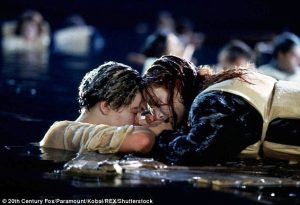
Visuals and Cinematography
Titanic is renowned for its stunning visuals and meticulous attention to detail. The film’s cinematography, led by Director of Photography Caleb Deschanel, is lush and evocative, with wide shots of the grand ship juxtaposed with intimate close-ups of the characters. The film makes excellent use of the majestic and expansive sets of the Titanic, capturing the grandeur of the ship while also illustrating the devastating scale of the disaster.
The special effects used in the reconstruction of the Titanic’s sinking were groundbreaking for its time, blending practical effects with CGI to create a believable and terrifying depiction of the ship’s final moments. The iconic scenes of the ship sinking, with water flooding the halls and passengers desperately fighting for survival, are some of the most memorable in cinematic history.
Music and Soundtrack
The film’s soundtrack, composed by James Horner, became one of the most iconic in film history. The haunting and romantic score complements the film’s emotional journey, particularly the main theme song, “My Heart Will Go On” by Celine Dion. The song became a global hit and won several prestigious awards, including the Academy Award for Best Original Song. The music plays a pivotal role in setting the tone of the film and enhancing its emotional impact.
Reception and Legacy
Upon its release, Titanic was a massive commercial and critical success. It became the highest-grossing film of all time, grossing over $2 billion worldwide (a record it held until “Avatar” in 2009, also directed by James Cameron). The film was praised for its stunning visuals, performances, and its emotional depth. It also received widespread acclaim for its blending of historical events with fiction, making the Titanic disaster accessible to new generations.
The film won 11 Academy Awards, including Best Picture, Best Director, and Best Original Song. It also received numerous nominations and wins from other major awards bodies, cementing its place as a modern classic.
Titanic continues to be celebrated for its monumental achievements in filmmaking and storytelling. It remains one of the highest-grossing films of all time and is regarded as one of the greatest films ever made, particularly in the romance and historical drama genres.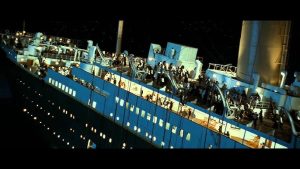
Fun Facts
- The Iconic Scene: The famous “I’m the king of the world!” scene on the bow of the Titanic was improvised by Leonardo DiCaprio, capturing the carefree spirit of Jack’s character.
- Massive Set: The filmmakers built a near-full-scale replica of the Titanic, which allowed for the realistic depiction of the ship’s interior and exterior. This set was used for many of the film’s key scenes.
- Record-Breaking: At the time of its release, Titanic held the record for the most Oscar wins by a single film, tying with Ben-Hur (1959) and The Lord of the Rings: The Return of the King (2003).
Conclusion
Titanic (1997) is a visually stunning, emotionally powerful, and culturally significant film that remains a cornerstone of modern cinema. Its combination of romance, historical drama, and thrilling disaster filmmaking, coupled with the standout performances of Kate Winslet and Leonardo DiCaprio, have made it an enduring classic. The film’s lasting legacy is reflected in its global popularity and continued influence on filmmaking, making it a must-see for audiences of all ages.
